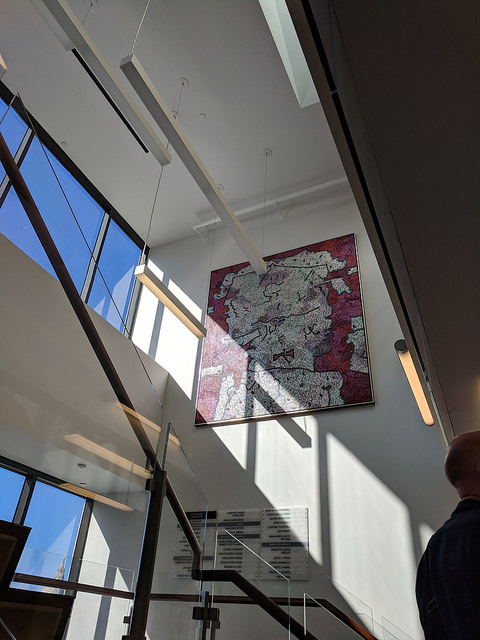Building accessible infrastructure into writing and coding style
As you may be aware by now, faithful reader, I am obsessed with my game, which is set in the Bay Area on and around the BART train system. It is science fictiony and magicky, with time travel and weird stuff abounding. I set out with the intention that the player should be able to pick a mobility level and sightedness, possibly in elaborate gradations but for now, at a minimum viable level, the player can choose to be walking or a powerchair user, and blind or sighted, in any combination. For the powerchair character, they can’t do stairs and that’s about it. The blind player (simulated at this testing phase by providing the player a pair of wraparound mirrorshades) will have the “look” command replaced by listen *(maybe) or all room, object, action, and NPC descriptions will have non-sight-based descriptions.
Just as a note, I have not written the system yet for cane tapping but that will likely be integrated.
I am finding it interesting to try out the alternate description route. For example here is a super easy case where the description is written to make it very flexible, with only one word difference in the description:
The description of Calle 24 Northwest Corner is "A busy corner at a busy intersection. You can [if player is blind]hear[otherwise]see[end if] a steady stream of cars, buses, and people passing by."
Or, a little bit longer example,
A flower seller is a person. In Calle 24 Southwest Plaza is a flower seller. The description of a flower seller is "[if player is sighted]A short, smiling woman in a baseball hat and a red checked scarf pushes her wheely cart full of roses and carnations. Her jacket has a ladybug pin.[otherwise]You can hear a short woman just next to you, fussing over a metal cart.[end if]".
Every turn when the player can see a flower seller:
say "A flower seller [if player is sighted][one of]beams at you with a huge happy grin[or]watches the people passing by[or]smiles as she stops to talk with a friend[or]offers you a little bunch of carnations tied with string, saying 'Flores para ti?[otherwise]calls out, 'Flores!'[or]'[or]shares a coffee with a friend, chatting[or]fusses over her bunches of flowers, arranging them nicely[end if][as decreasingly likely outcomes]."
It becomes clear to me that I have to train myself to structure the experience of the reality of the game in particular ways. I might establish a convention (enforced with tests) where each thing defined in the game is required to start with a description for the blind point of view character, then have a description for the sighted. Each clue for the puzzle needs to be playable both ways, as well, and both should have a richness and depth of experience that makes the game fun & action compelling, hinting at possible avenues to explore. So, it will affect how I design the puzzles and clues as well as just some sort of “layer of extra text” to think through. One result is that talking with other characters will likely be more important than it might have been otherwise.
This shows very clearly how important it is to design an environment (whether it is a game, a novel, a class, a web site, software, a real life building, or a city street ) with the point of view of different people in mind. Having written only 6 sample rooms and couple of NPCs and objects and their behavior, I’m very glad that I’m doing this now, and not trying (as so many designers, programmers, and architects do) to staple on a half assed ramp or some probably flat braille a month before finishing a 2 year long project.



